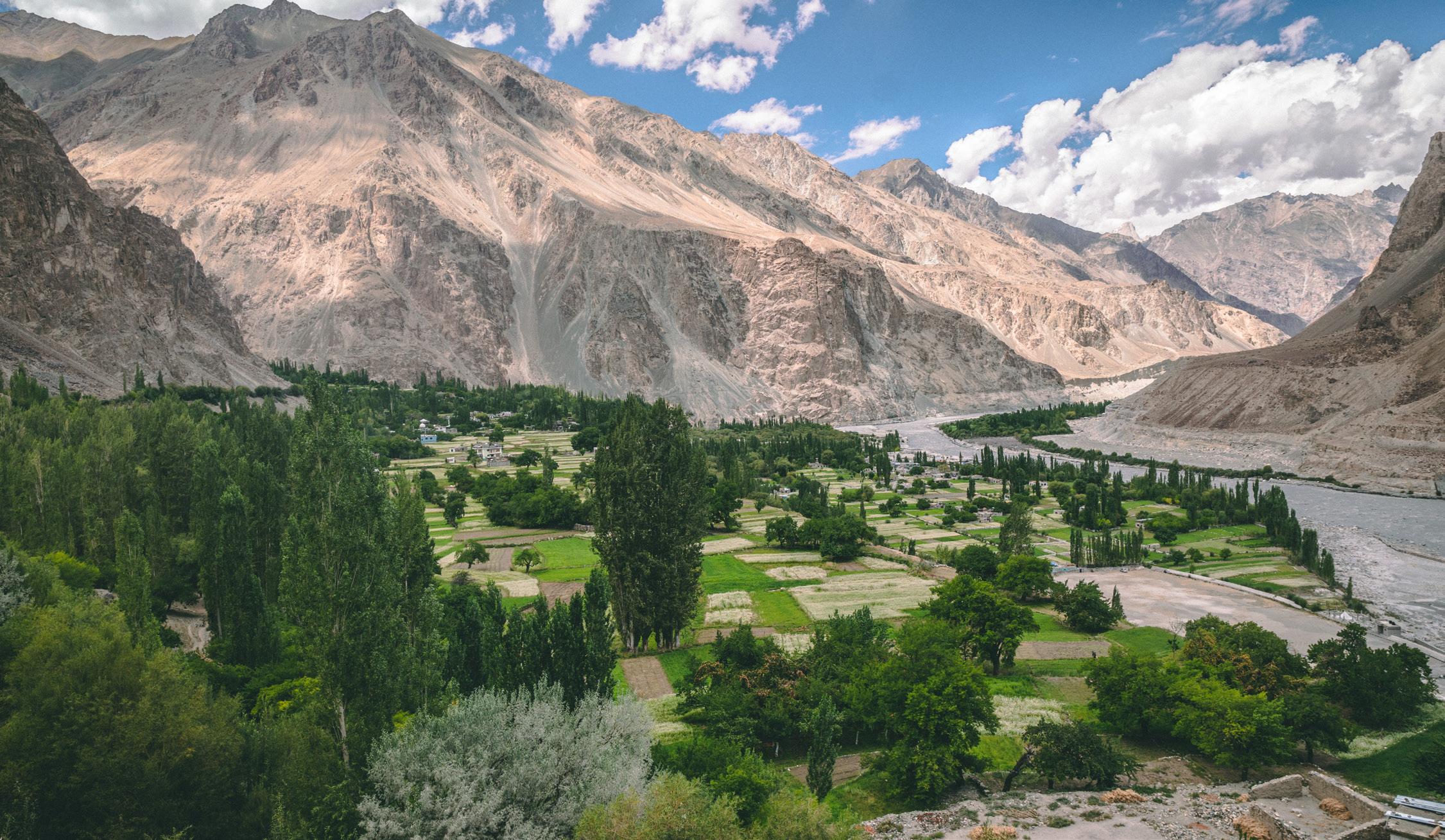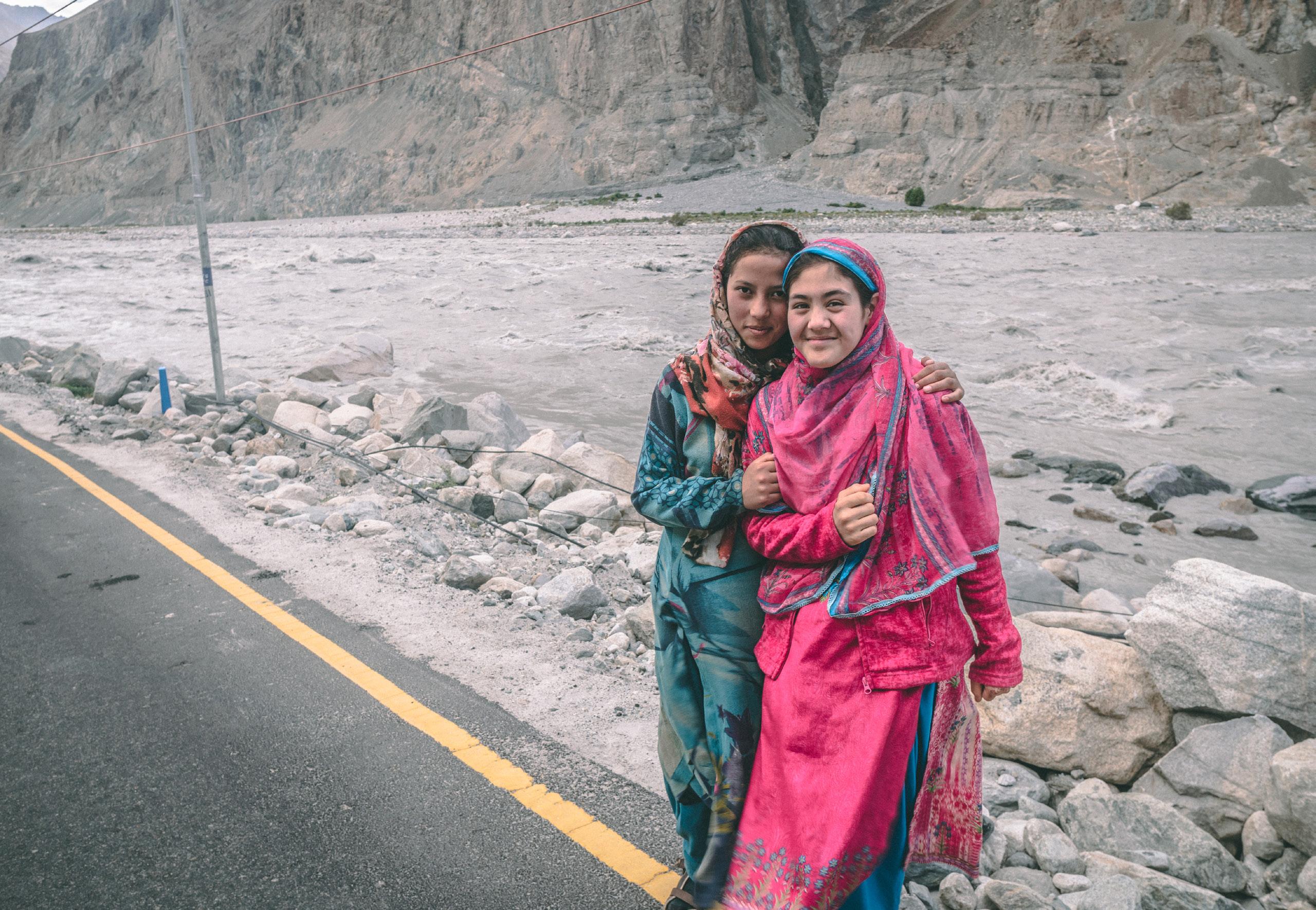
4 minute read
Turtuk: The King Between the Mountains
Story and photography by Jay Tindall
The People and Terrain of Turtuk
“The Yabgo dynasty ruled this area for 2,000 years,” the king says. “The Turtuk people don’t mind that it is India, that it is Pakistan. It is politics.” Through the arid mountains of Ladakh on the border with Pakistan, there sits a king: Yabgo Mohammad Khan Kacho. He rules over the buckwheat fields and quiet stone streets of Turtuk. As we meet in his homelike royal palace, he insists on speaking English. Like most in Turtuk, the king is Muslim.
“Turtuk is 100 percent Muslim,” he says, however, Ladakh’s Buddhist heritage still marks the landscape with gompas. There is one road into Turtuk, and Pakistan is only two kilometers away. “Ghengis Khan came here, […] Alexander (the Great) came here, and the British came to India – it is the same,” the king says. The people who call Turtuk home today have lived under both Pakistan and India; village life has remained the same. The king of Turtuk himself has relatives over the Line of Control in Pakistan.
“Oh, yes, I talk to them. My two sisters live in Pakistan at this time,” he says, adding that he can’t visit them. “With the two countries’ tension, it is not good.” My journey to Turtuk followed the Shyok river for 2.5 hours from Diskit. Along the way, I began to notice that the region was dotted with largely abandoned military posts and pillboxes. Today, these outposts feature Indian artillery ready to fire over the mountains into Pakistan. Only a few scattered villages from Baltistan remain under control of India, the spoils of the 1971 Indo-Pakistani War. This king’s unofficial suzerainty in the Nubra Valley comes from the Yabgo dynasty on the changing borders of Baltistan, a region almost entirely in Pakistan today.




On the road to Turtuk, the landscape is barren. The sharp peaks and intimidating expanses so famed in the region are traded for bucolic valleys filled with crops. Our first stop was to meet the king in his palace. Palace is a bit of a misnomer. The Balti Museum of Turtuk is more of a home and courtyard. Unpretentious, friendly, and excited to speak about the history of Baltistan and the Yabgo Dynasty, King Yabgo Mohammad Khan Kacho traces the heritage of the Yabgo back to a Chinese travel writer in the sixth century. On the wall just a few meters from where we speak, the whole line of this dynasty is set on the wall, titled, “The Pedigree of Rajas of Yabgo Dynasty Chhorbat Khapulu Baltistan.” Upstairs from the small courtyard is the museum: bows and arrows, artifacts, maps, the remnants of Baltistan’s kingdom in modern day India. The history whence this pride comes emanates from Beg Manthal who ruled Chorbat-Khaplu all the way to the western reaches of Ghizer.
“Turtuk is an agricultural village,” the king tells me. “It’s good air quality. Fruits and vegetables […] people’s income is apricots, walnuts, and this sort.” At one time, the king himself adopted farming as his profession, but his work now is maintaining the museum, for which he receives no funds from the authorities. It has been elsewhere noted that the king is an author – although of a book banned for blasphemy for which he regrets he does not retain a copy. The unofficial borders of Baltistan are actually quite large, extending all the way North to Afghanistan. For India, Baltistan is only a few dozen kilometers. Turtuk only recently opened to tourism in 2010, but even in the travel frontier that is Ladakh, Turtuk is far off the beaten track only 200 kilometers from Leh. “It is good for the income. They come here, the many tourists come here and the local people. This income source is good.” Even though you haven’t crossed into Pakistan, Indian Baltistan feels very much like crossing a border. From the very much Buddhist countryside to the predominately Muslim area is a stark contrast. It is not just the king travelers come to visit. The town of Turtuk also boasts a waterfall, Balti Heritage Home, and Brokpa Fort. My main concern, however, was shooting Turtuk town and its people. As a photographer, the region presented something of a challenge. While the people of lower Ladakh are all-too happy to sit for portraits, this slice of Indian Baltistan is notorious for an aversion to photography. The village before Turtuk, I was told, is exceedingly jealous of Turtuk, which receives all the tourism. I soon learned this to be true while shooting when a child threw water at us. Similarly, most of the people of Turtuk are not keen to be photographed; for portraits, it was one of the most trying places I have ever been. At one point I was driven to give my camera to a woman in the village so that she might take pictures of those around her — yielding mixed results. “Having a king system is not good,” the king says, denoting his station. “All the world is a democracy and that’s good.”








